Edward Jump (1831?-1883) was a French-American artist popular for his drawings and sketches in the United States during the mid-19th Century.
Contents

Edward Jump (1831?-1883) was a French-American artist popular for his drawings and sketches in the United States during the mid-19th Century.

Jump was born in Paris, France, around 1831. [1] His early life is not well documented, but he emigrated to California in 1852, attracted to the United States by the California Gold Rush. [2] He traveled in the Western United States, returned to Paris for a short time and then back to the U.S. [2] [3]
While living in California, Jump, who was both a talented painter and cartoonist, made a living drawing commercial signs, painting portraits, and producing humorous cartoons of political figures for various publications. [2] He worked in many places around the state, but mostly in San Francisco; there he created labels for whiskey bottles, and caricatures of contemporary figures. [4] The 1860 census listed him as a "portrait painter." [1]
In 1864 he was living in the Montgomery Block, San Francisco. [5]
Jump remained active in San Francisco until October 1865, when an earthquake occurred. After moving to Washington, DC, in 1868, Jump became somewhat renowned for his artistic merits as a portrait painter. It was there that he met and married a French performer from a touring opera company. [2] [4] By the 1870s, Jump and his wife had moved to New York City, where he worked as a comic illustrator. Later in the decade, Jump attempted to start an illustrated newspaper in Montreal. Following the failure of this venture, Jump moved frequently, first to New Orleans, then to Cincinnati and St Louis. [4]
In 1875 and 1878 he lived in St. Louis, Missouri. [6] [7]
In 1878, while working on sketches of the New Orleans Mardi Gras for the Frank Leslie's Weekly, Jump was arrested on a charge of carrying a concealed weapon when a pistol fell from his pocket and discharged. He pleaded guilty and a judge sentenced him to ten minutes in the parish prison. [8]
Jump was living in St. Louis in 1878 and assigned to make sketches for Frank Leslie's Weekly of the first Veiled Prophet Parade and Ball when he was hurt badly by two hoodlums who took a wallet, a ring, and sketches of the ball. [9] Nevertheless, Jump was able to finish his drawing of the parade (above), and it was published in the Weekly.
Finally, in 1880, Jump and his wife settled in Chicago, where he was just able to make a living by producing circus and theatrical posters. [4] He was living in Chicago in 1882. [10]
When Jump lived in San Francisco, California, in the 1860s, he was reputed to be the city's "favorite cartoonist." He roomed with Samuel Clemens, who wrote under the name Mark Twain. Michael G. Mattis of the Sacramento Bee wrote that Jump "had an eye for accurate detail, even when his aim was burlesque. One of the pleasures his audiences got from his drawings was that in crowd scenes it was always possible to recognize the faces of scores of notable San Franciscans." [11]
Fellow artist Frank Bellew recalled that Jump once said of his career: [12]
. . . one has to turn one's hand to everything. I draw caricatures for the bar-rooms, and do these big posters for the theaters, and make sketches for private individuals, and so on.
The Chicago Tribune said that Jump: [3]
despite his dissolute habits, was possessed of no mean talent in his particular line. He never attempted much in the way of oil paintings of any very fine work, because he was too restless and nervous and lacked application. As a caricaturist, however, he was a wonderful success. Specimens of his work in this line are to be found in a thousand different places and in a score of large cities . . . .
A dispatch from St. Louis, Missouri, [3] said that Jump:
was known as an eccentric character, but a fellow of some talent, and very apt at cartoons. Free and easy specimens of his work adorn the walls of several leading saloons and sporting headquarters. . . . Through his paintings[,] he was as well known as any man in the city.
On April 21, 1883, Jump committed suicide by shooting himself in the head with a pistol, [13] driven to depression by the state of his marriage, financial issues, and alcoholism. He died the next morning. [4]
An article reporting Jump's death appeared in the Chicago Daily Tribune , on the day of his death. [13] The article described how Jump wrote two final letters, one addressed to his wife, and another to a lodge in St. Louis, where he was a member.
The letter to his wife read as follows:
...My dear wife: I have to go – keep calling here for letters; there will be a good one for you from England. I am too excited to write. God bless you. Your husband, E. Jump.
The other read:
20 April 1883. -- Gentlemen: I belong to the Lodge of Knights of Honor, No. 100 Oak Lodge, St. Louis, Mo. If I am disfigured don't let my poor wife see me. She is nervous, and it might kill her. I want to be buried by brothers. Edward Jump. [13]
Jump's funeral took place two days after his death, and he was buried at Rosehill Cemetery, Chicago. [14] He was survived by his wife and daughter. [3]
The woman with whom he was living in 1860 was named Rose Jump. [1] He married Emily C. Rogers of Ireland on January 21, 1868, in the District of Columbia. [15] [16] She had been a prima donna with Napoleon's Italian opera company in Italy. [17]
They had a daughter, born 1865. [3]
Emily C. Jump was committed to a New York asylum 1in 1885 as a "helpless inebriate." [17]
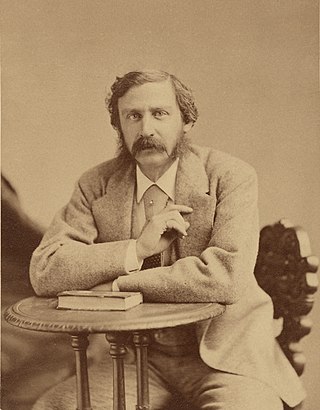
Bret Harte was an American short story writer and poet best remembered for short fiction featuring miners, gamblers, and other romantic figures of the California Gold Rush.

Samuel Langhorne Clemens, known by the pen name Mark Twain, was an American writer, humorist, essayist, entrepreneur, publisher, and lecturer. He was praised as the "greatest humorist the United States has produced", and William Faulkner called him "the father of American literature". His novels include The Adventures of Tom Sawyer (1876) and its sequel, Adventures of Huckleberry Finn (1884), with the latter often called the "Great American Novel". Twain also wrote A Connecticut Yankee in King Arthur's Court (1889) and Pudd'nhead Wilson (1894), and co-wrote The Gilded Age: A Tale of Today (1873) with Charles Dudley Warner.

Life on the Mississippi is a memoir by Mark Twain of his days as a steamboat pilot on the Mississippi River before the American Civil War published in 1883. It is also a travel book, recounting his trips on the Mississippi River from St. Louis to New Orleans, and then from New Orleans to Saint Paul many years after the war.
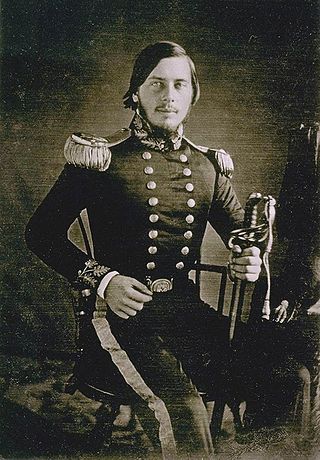
George Horatio Derby was an early California humorist. He attended West Point with Ulysses S. Grant. Derby used the pseudonym "John P. Squibob" and its variants "John Phoenix" and "Squibob." Derby served as a lieutenant in the U.S. Army Corps of Topographical Engineers. In his spare time, he wrote humorous anecdotes and burlesques, often under the guise of his pseudonyms.

Horatio Walker LL.D. was a Canadian painter. He worked in oils and watercolours, often depicting scenes of rural life in Canada. He was influenced by the Barbizon school.
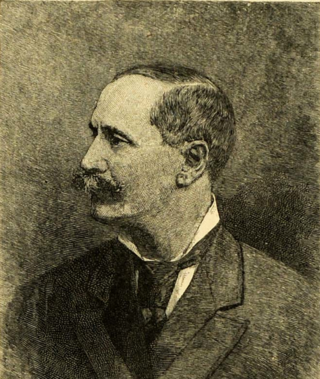
David Dalhoff Neal, was an American artist.

Harold Tucker Webster was an American cartoonist known for The Timid Soul, Bridge, Life's Darkest Moments and others in his syndicated series which ran from the 1920s into the 1950s. Because he disliked his given name, his readers knew him as H. T. Webster, and his signature was simply Webster. His friends, however, called him Webby.

Clare A. Briggs was an early American comic strip artist who rose to fame in 1904 with his strip A. Piker Clerk. Briggs was best known for his later comic strips When a Feller Needs a Friend, Ain't It a Grand and Glorious Feeling?, The Days of Real Sport, and Mr. and Mrs.
Cornelia Baxter Barns was an American feminist, socialist, and political cartoonist.
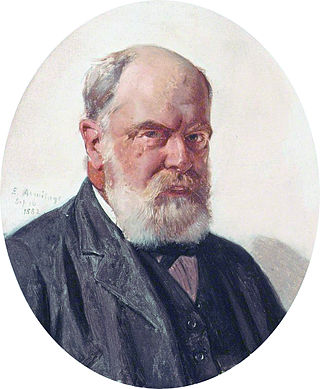
Edward Armitage was an English Victorian-era painter whose work focused on historical, classical and biblical subjects.
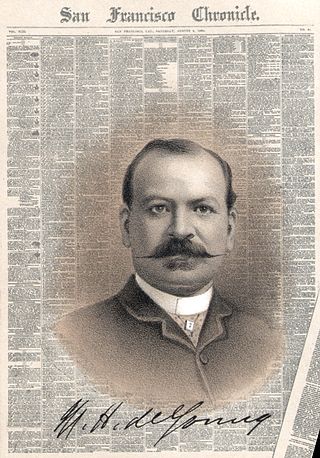
Michael Henry de Young was an American journalist and businessman.
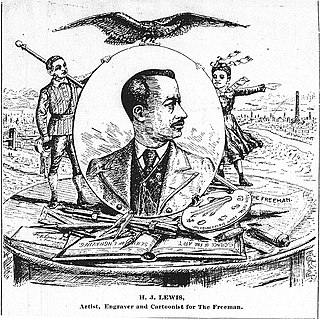
Henry Jackson Lewis was the first African-American political cartoonist.
Mervyn "Skip" Williamson was an American underground cartoonist and central figure in the underground comix movement. Williamson's art was published in the National Lampoon, High Times, the Realist, the Industrial Worker, the Chicago Seed, Encyclopædia Britannica and others. His best-known character is Snappy Sammy Smoot.

Daniel G. Taylor was the 17th mayor of St. Louis, Missouri, serving from 1861 to 1863.
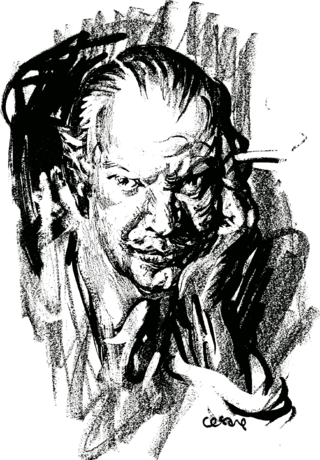
Oscar Edward Cesare was a Swedish-born American caricaturist, painter, draftsman and editorial cartoonist.

Samuel Langhorne Clemens , well known by his pen name Mark Twain, was an American author and humorist. Twain is noted for his novels Adventures of Huckleberry Finn (1884), which has been called the "Great American Novel," and The Adventures of Tom Sawyer (1876). He also wrote poetry, short stories, essays, and non-fiction. His big break was "The Celebrated Jumping Frog of Calaveras County" (1867).
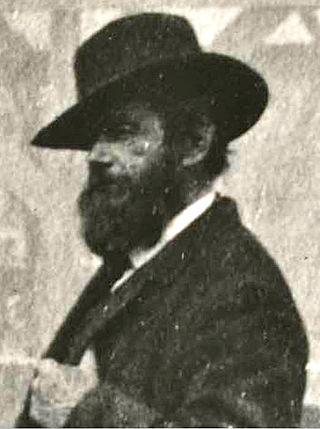
A. W. Piper was a Seattle, Washington pioneer whose name was given to Piper Orchard, Pipers Creek and Piper's Canyon in Carkeek Park, and who was elected in 1877–1878 a socialist Seattle City Council member. He owned a bakery known for its artistic confections that served Seattle and the Puget Sound region.

Manuel Rosenberg was an American illustrator, cartoonist, writer, lecturer, teacher, editor, and publisher. From 1917 to 1930, he was the chief artist for the Scripps-Howard chain of newspapers and the art editor of the Cincinnati Post.